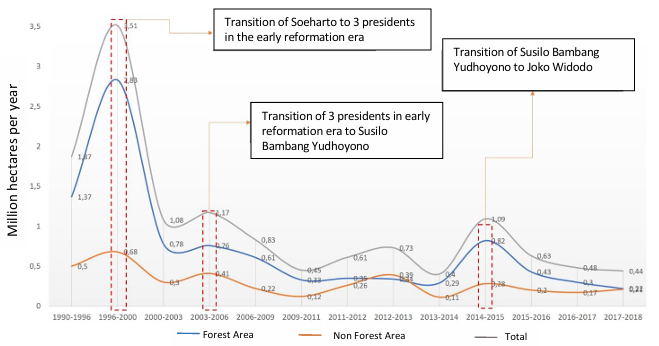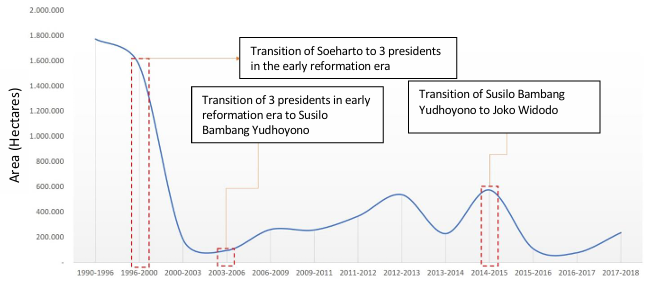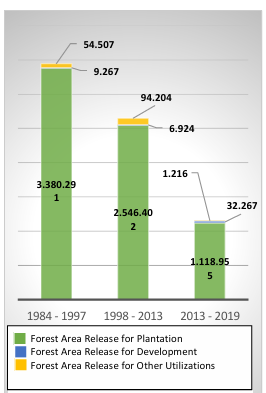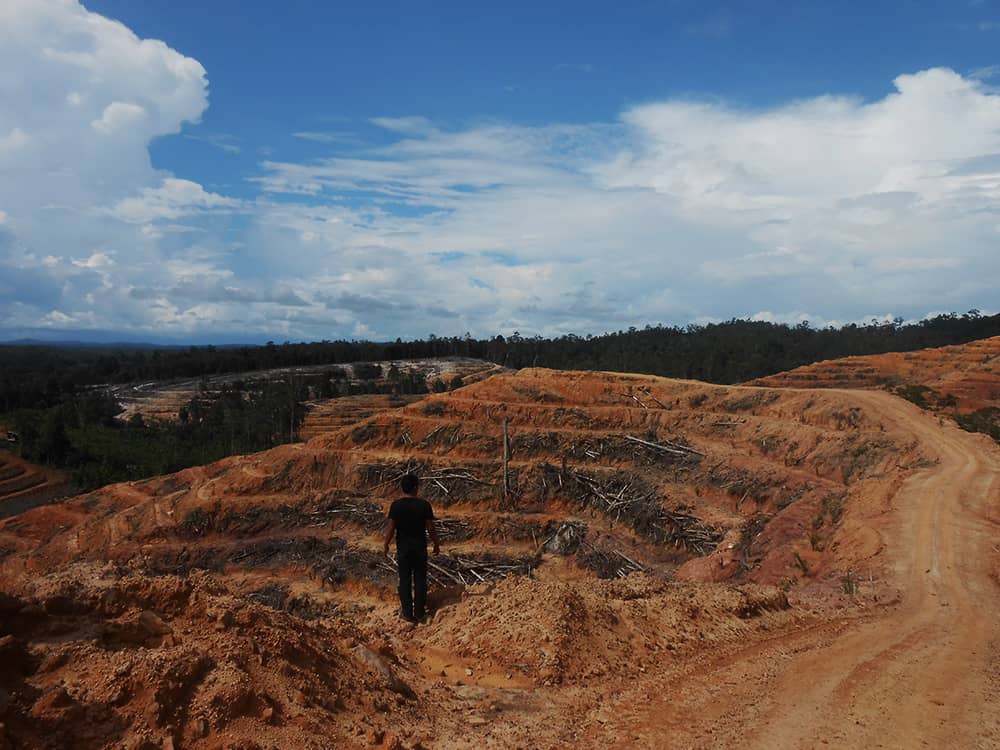“Critical note about the loss of natural forests in Indonesia”
Since the last few decades, natural forests in Indonesia have continued to experience serious deforestation (loss of natural forest cover) and have experienced a decline in both quantity and quality. The condition of natural forests in 2017 was an accumulation of weak forest governance that occurred from time to time. Changes of regimes and policy developments in forest management have not been able to bring about the good forest governance. Slowly but surely, the natural forests continue to experience tremendous shrinkage. The results of the FWI analysis from year 2000 to 2017 have shown that the deforestation rate is still high. In the year 2000 to 2009, Indonesia lost natural forests of 1.4 million hectare per year. The period of year 2009 to 2013, the forest loss has decreased to 1.1 million hectare per year. It has increased again in the period of 2013-2017 to 1.4 million hectare per year.
In the past, timber commodification has always been the core of forest exploitation as the country’s most reliable source of income and foreign exchange. The forestry sector once had a major role in the recovery of the national economy in the era of the 1970s, before it was taken over by the oil and gas sector. The forestry sector experienced rapid growth and drove the exports for the economy in the 1980s and 1990s, even though this expansion was achieved at the expense of forests, because forestry practices were not sustainable (PKHI, 2001). Forest destruction is caused by forest governance policies that are influenced by global economic forces. This is evident in the political economy policies that are pro-investment, for both foreign and domestic investments, in the forestry, agriculture and mining sectors. These policies aim to increase the economic development, which have contributed to forest destruction in Indonesia. This pro investment political economy policy was very evident in the colonial era, New Order era and post-New Order era.
This shows that until now forest management policies have only viewed forests as an economic source. In fact, this view has existed since the colonial era. Meanwhile, forest protection efforts are often carried out only to secure and reserve this economic resource. It is not because of its nature where the forest is the source of life with various functions, from ecological to socio-cultural functions in supporting the life systems. On the other hand, marginalization of indigenous or local communities happens which then eliminates the communities’ interaction with the forests and widens structural inequalities, such as lack of access for communities, politics of land allocation and distribution, commodity and land conversion. Moreover, local wisdom that has been passed down from generation to generation is slowly eroded and extinct.
The Ministry of Environment and Forestry (MoEF) stated that the forest area utilization for the community is only 4.14 percent, while the remaining 95.76 percent is controlled by private companies. As of 2018, mainland of Indonesia has been distributed to 541 permit holders from the forestry sector, 1,866 oil palm plantation permit holders, and 11,418 mining business license holders (FWI, 2019). This situation creates a high potential for conflicts. Even in 2018, there were 410 agrarian conflicts with an area of about 807 thousand hectares, involving 87,500 households (KPA, 2018).
The ongoing forest destruction, structural imbalances in forest management, rampant agrarian conflicts, pro-investment policies, the closure of data and information on forests and land, and information asymmetry that further obscures factual information regarding forest conditions and its management, and many other things, are the colors of Indonesia’s current forest management situation.


Another interesting thing is that the number of deforestation rates from various government and non government institutions that are different from each other has also triggered the discourse on defining forest and deforestation. The difference in defining the forest and deforestation eventually raises the presumption that the rate of deforestation has become a political tool for parties with an interest in forests and disguises the fact of the actual forest loss. The government comes with various definitions of deforestation such as gross deforestation and net deforestation. In the forest resource monitoring activities, the rate of deforestation is calculated as a supporting material in the implementation of forest management. The deforestation definition used is the ‘net deforestation’. Meanwhile, the calculation of carbon and emission levels uses the definition of ‘gross deforestation’ (MoEF, 2018).
Apart from the different definitions of forest and deforestation, the fluctuation of the graph of the deforestation rate in Indonesia is also related to the release of forest areas in Indonesia. There is a similarity between the graphical deforestation figures and the area of forest released by the Government (Figure 2). As happened in the period 1996 to 2000. An even more similar pattern occurred in the period 2014 to 2015. From this similarity, it further strengthens the notion that the release of forest areas regardless of the purpose, although dominated for plantation areas, has a major contribution to the dynamics of deforestation (Figure 3).

If we take a closer look, the graph that showing the pattern of fluctuating rates of deforestation is also in line with the political momentum in Indonesia. It can be seen that the extent of deforested forest is also in line with the momentum of the regime change. It can be seen in the figure above, in the section marked with a dashed red box. First, in the range of 1996 to 2000, the rate of deforestation has increased very sharply, reaching 3.5 million hectare / year. This period was a period of transition from the Soeharto era to reformation era. Second, in the period of 2003 to 2006, this was a transition period between three presidents at the beginning of the reformation era, from President Habibie, President Gusdur, President Megawati to President Susilo Bambang Yudhoyono (SBY). As we know, during that period the presidential election was held in 2004. Third, in the 2014 to 2015 period, which was a transition period between SBY era and Joko Widodo era. The presidential election was held in 2014.




